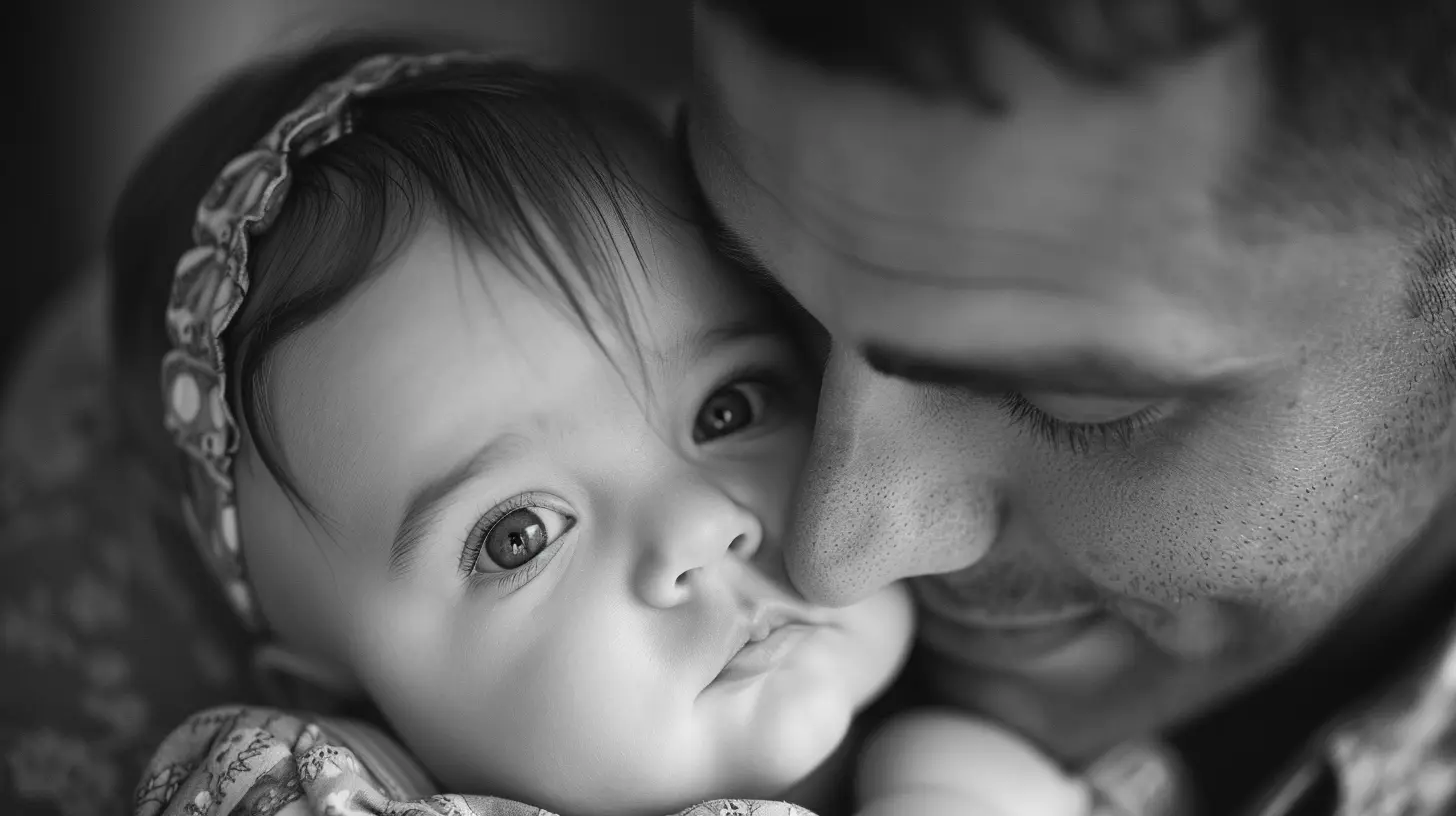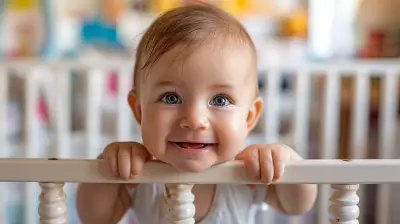Parenting Through Transitions: How Attachment Parenting Supports Major Life Changes
6 September 2025
Let’s talk about parenting… but not just the day-to-day stuff like bedtime battles or picky eating habits. Let’s dive into the deeper waters—those moments when life throws a curveball and everything feels like it’s shifting beneath our feet.
We’re talking about transitions. Big ones. A new baby in the family, a cross-country move, divorce, a new school year, job loss, or even grief. These moments shape our families in profound ways. And while change is inevitable, how we parent through these changes makes all the difference.
That’s where attachment parenting comes in like a warm blanket on a cold morning. It’s not just about babywearing or breastfeeding—though those are part of it. It’s a mindset. A way of connecting with our kids so deeply that even during the storms, they still feel safe in our harbor.
So grab a cup of coffee (or reheat it for the third time—we’ve all been there), and let’s chat about how attachment parenting can help you and your child weather life’s biggest transitions.
What Is Attachment Parenting, Really?
Before we dive into how attachment parenting supports transitions, let’s quickly clear the air on what it actually is.Attachment parenting is based on the idea that strong emotional bonds between child and caregiver lead to healthier, more secure, and confident children. It's rooted in the work of John Bowlby and Mary Ainsworth—pioneers in attachment theory.
The core values include:
- Responding with sensitivity
- Using positive discipline
- Maintaining close physical and emotional contact
- Being emotionally available
- Respecting the child's developmental needs
It’s not one-size-fits-all, and it’s definitely not perfect. But it’s all about creating a secure base from which your child can explore the world—and return to when things get tough.
Life Changes That Can Rock Your Parenting Boat
Transitions come in many forms, and they often show up uninvited. Some common major life changes include:- A new sibling
- Moving to a new home
- Starting school or changing schools
- Divorce or separation
- Loss of a loved one
- Financial or job instability
- Health crises
Each one of these events brings stress not just to parents but to children as well. And kids, especially young ones, don’t have the words or emotional tools to express what they’re feeling. That’s where attachment parenting gives us the upper hand.
Why Transitions Are So Hard on Kids (And Parents)
Let’s be honest. Even for adults—who supposedly have it all together—change is rough. We like predictability. So imagine what it’s like for a child who thrives on routine and consistency.When big changes happen, kids can feel:
- Unsafe
- Uncertain
- Out of control
- Disconnected
They might act out, regress (hello, bedwetting or tantrums), or withdraw. These aren’t “bad behaviors”—they’re distress signals. They’re saying, “I don’t know what’s happening, and I need you.”
Attachment parenting equips us to recognize these signals and respond with empathy instead of punishment.
How Attachment Parenting Supports Through Transitions
So how exactly does attachment parenting help during these stormy times? Let’s break down the major tools and how they come into play when life gets bumpy.1. Emotional Availability: Being Their Safe Space
When your child’s world feels upside-down, you become their anchor.Staying emotionally available means you’re not just physically present, but also mentally and emotionally checked in. That’s hard when you’re navigating your own emotions too—but it’s essential.
Think of yourself like a lighthouse. Even when the seas are wild, your steady light helps your child find their way back to calm.
How to practice it:
- Use validating language: “It’s okay to feel scared about starting a new school.”
- Sit with their feelings without rushing them to ‘feel better’
- Offer extra cuddles and quiet time
2. Responsive Parenting: Reading Between the Lines
Kids don’t always (or ever) come out and say what they’re feeling. You have to become something of a child-whisperer. Attachment parenting encourages tuned-in responses.If your toddler suddenly starts hitting after a move, that’s not being “naughty”—that’s confusion, fear, and frustration bubbling over. Attachment parenting prompts you to ask, “What’s behind this behavior?”
Pro tip: Respond, don’t react. Empathy first, guidance second.
3. Routines and Rituals: Consistency in Chaos
During big transitions, routines are your best friend. They create little islands of predictability in a sea of uncertainty.Attachment parenting doesn’t mean rigid schedules, but it does value rhythm and flow—especially during tough times.
What this looks like:
- Keeping bedtime rituals consistent
- Morning routines that start the day off peacefully
- Mealtime check-ins to maintain connection
It’s like giving your child a map when everything else feels unfamiliar.
4. Co-regulation: Calming Together
Co-regulation is a big fancy word, but it’s actually pretty simple. It’s about using your calm to help your child find their own calm.Kids borrow our nervous systems. If we’re frantic and frazzled, they feel it. But if we can breathe deeply, slow things down, and stay grounded—well, they’ll start to sync with that.
Try this:
- Deep breathing together
- Gentle touch like hand-holding or rubbing their back
- Saying, “We’re going to get through this together.”
It’s like giving your child an emotional seatbelt while driving through rocky terrain.
5. Empowerment Through Connection
Transitions often make kids feel powerless, so giving them choice and agency (in age-appropriate ways) can make a world of difference.Let them help pack boxes during a move. Let them choose which books to read during a divorce week. Let them say goodbye to their old school in their own way.
Connection + empowerment = resilience.
Real-Life Scenarios: Attachment Parenting In Action
Let’s imagine a few common transitions and how attachment parenting approaches them.Scenario 1: Welcoming a New Sibling
Big change, huge emotions. Your firstborn might feel replaced or confused.- Focus on one-on-one time with the older child
- Involve them in baby care (in small, safe ways)
- Validate their emotions: “It’s hard sharing mom and dad. I understand.”
Scenario 2: Moving to a New Home
Even exciting moves can bring anxiety.- Visit the new neighborhood together before the move
- Stick to familiar routines as much as possible
- Acknowledge their grief over what’s being left behind
Scenario 3: Divorce or Separation
This one’s deeply emotional.- Prioritize emotional honesty in age-appropriate ways
- Avoid putting children in the middle or speaking negatively about the other parent
- Be consistent with routines and available for emotional processing
What If You Haven’t Practiced Attachment Parenting Before?
First of all—no guilt. Parenting isn’t about perfection. It’s about growth and connection.Attachment parenting isn’t an all-or-nothing rulebook. You can start integrating these principles at any stage. The goal is always the same: creating a secure, trusting relationship that becomes your child’s emotional home base.
Self-Care for Parents: You Can’t Pour From an Empty Cup
Let’s get real for a second. You're not a superhero (though your kids might think you are). Transitions stress you out too.Attachment parenting isn’t about self-sacrifice. It’s about being present, and you can’t be fully present if you’re burnt out.
So… take care of yourself.
- Reach out for support
- Talk to a counselor
- Prioritize rest (yes, it’s possible… sometimes)
You matter. Your emotional well-being affects how you process and guide your child during transitions.
Final Thoughts: Parenting Is a Journey, Not a Destination
Life changes aren’t just bumps in the road—they’re chapters that shape your family story. With attachment parenting as your guiding light, you’re not just surviving these moments—you’re deepening your bond with your child through them.You’re showing them they’re not alone. That no matter what changes come, your love, your presence, and your connection are constants.
And that, my friend, is powerful parenting.
all images in this post were generated using AI tools
Category:
Attachment ParentingAuthor:

Max Shaffer
Discussion
rate this article
1 comments
Berenice Johnson
This article effectively highlights how attachment parenting fosters emotional resilience in children during transitions, promoting secure bonds that help them navigate life's changes more smoothly.
September 16, 2025 at 2:24 AM

Max Shaffer
Thank you for your insightful comment! I'm glad you found the article highlights the importance of attachment parenting in fostering resilience and secure bonds during transitions.


